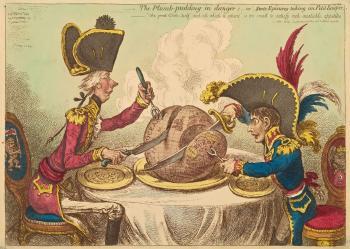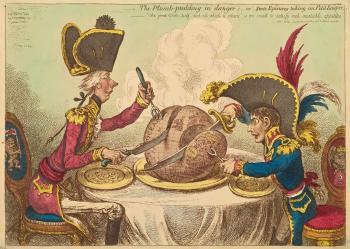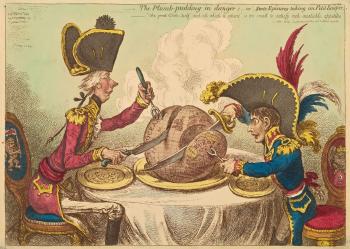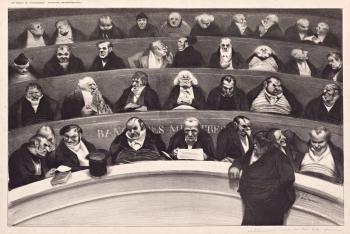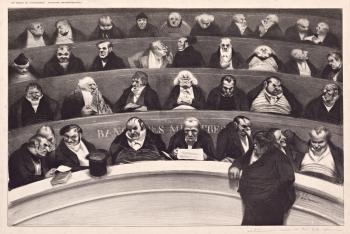Hogarth, Daumier, Gillray, Rowlandson are not exactly household names but they were the grandfathers of visual political and social satire. They set the blueprint for the modern day political skit and were unreserved in exposing the underbelly of life’s hypocrisies.
For those who need a reminder, satire is a close cousin of sarcasm and is used to expose, denounce or deride vice or immoral practices, mainly through the literary but also the graphic or performing arts.
The National Gallery of Victoria’s current exhibition The Satirical Eye: comedy and critique from Hogarth to Daumier has over 100 prints on display that represent highlights in satirical art from England, Spain and France.
“The works in this exhibition reveal much about human nature, as well as commenting on historically specific situations and individuals,” said Dr Petra Kayser, Assistant Curator of Prints and Drawings, NGV.
18th century England was by far one of the most liberal countries when it came to censorship.
Between 1770 and 1830, more than 20,000 etchings were published in London and sold as single-sheet etchings for those who could afford them. The latest print would also be displayed in the print shop window with great popularity.
French journalist Jaques Mallet du Pan who migrated to London, wrote in 1802: “People are fighting over here to see caricatures by Gillray in R. Ackermann’s shop-window. I cannot describe the enthusiasm when a new print is published. It is almost madness. People box their way through the crowd.”
Considering the context in which these works were created adds particular poignancy.
By contrast, James Gillray who lived 1756 and 1815 had aquired celebrity status and was sought after within the very circles that he satirised, despite his scathing depictions of royalty, aristocrats and politicians.
Gillray’s Lordly elevation 1802 was executed within two weeks on Sholto Henry Maclellan’s succession to the title of Lord Kirkudbright and depicts the diminutive Sholto in high spirits despite having to resort to Velno, the well known quack remedy for venereal disease.
“The Satirical Eye” exhibition also includes a particularly pretty and exquisite coloured etching. The public promenade (La promenade publique) 1792, by Philibert-Louis Debucourt. In it, the French nobility are socialising with careless frivolity, oblivious to the ensuing bloodshed of the French revolution that happened later the same year.
In Spain, Francisco Goya had seen and took direct inspiration from the etchings of Hogarth and Gillray to produce Los Capricios- a series of etchings also currently on display at the NGV.
Los Capricios was Goya’s first uncommissioned work and allowed him to be uncompromising in his critique of late 18th Century Spain.
Goya’s view of humanity with its frailties and vices is far more pessimistic than any of the other satirists. His scathing and controversial depiction of the Inquisition and the Church meant that Los Capricios had to be withdrawn from sale a mere two days after publication for fear of persecution.
It is interesting to note that Goya’s satire is directly informed by his own Christian moral beliefs despite his contempt for the Church.
It would be safe to say that as long as there are vices there will be satire as mirror for provoking change. But being able to peruse the satire over two or three centuries reveals far more than that society’s vices, for the distance between what was considered a vice then and now, is an equally unforgiving mirror for us.
History books record events and dates, but these satirical works have the very whiff of then and there, complete with smells and sounds, and the soul of centuries past.
The Satirical Eye: comedy and critique from Hogarth to Daumier is at the NGV until July 26 and entry is free. Visit ngv.vic.gov.au for further information.
